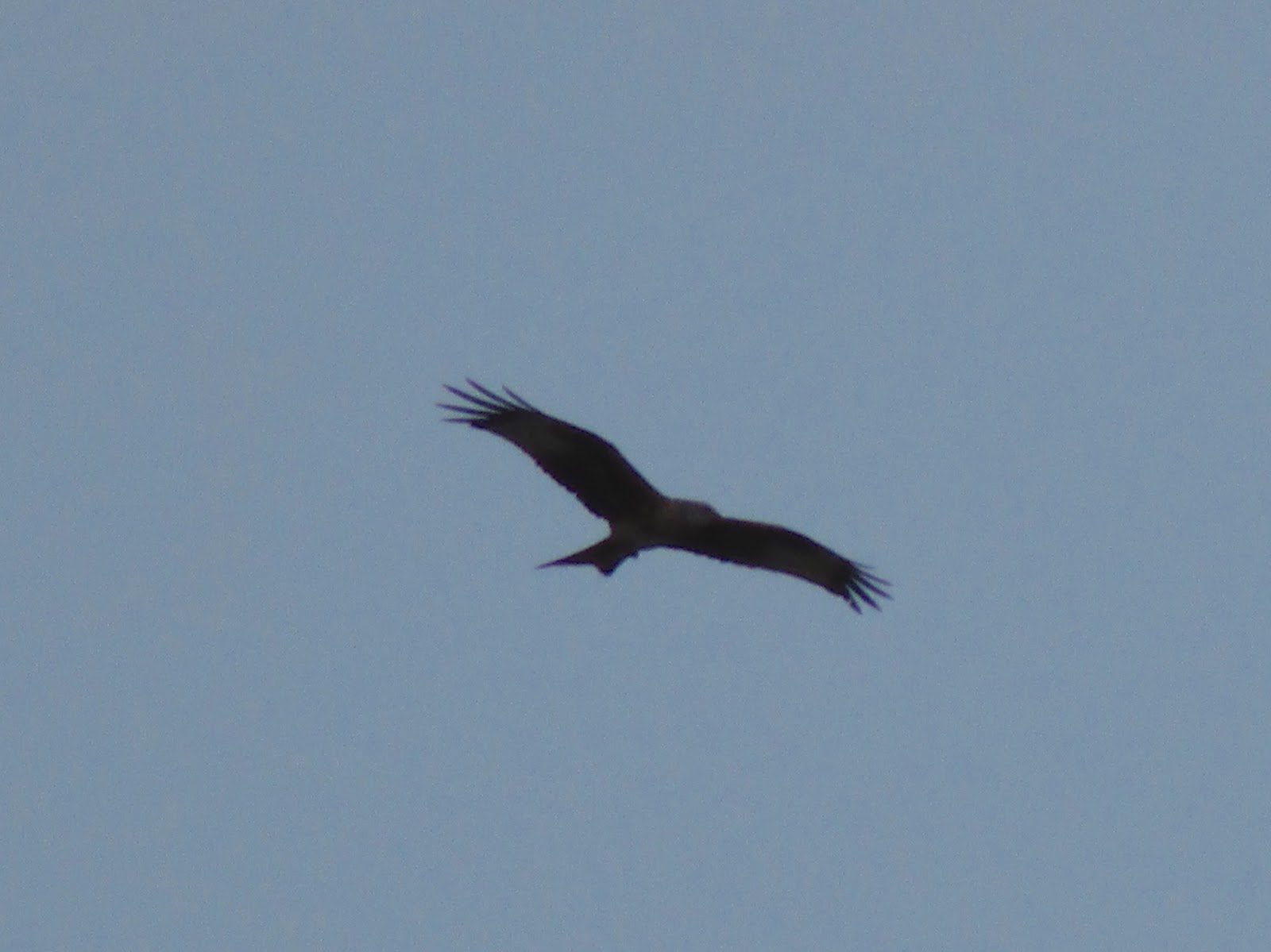We investigated under blocks of chalk and flint on the scree, in search for invertebrates. There were many Pogonognathellus longicornis springtails, the largest UK species. Their antennae are longer than their body, and when slightly disturbed they coil them like springs. We also found some tiny snails clinging to the underside of several rocks, a red ant and a black and red beetle (later identified by Robert Jaques as Calathus melanocephalus). I found a lovely, velvety snail, but before I could look at it I awkwardly dropped it and lost it in the moss below, fortunately I had taken a photo of it before this.
We climbed to the top of the site and there was an odd black shape on the hill below. Binoculars revealed a black rabbit, which was surprising. It appears that black rabbits are not unheard of in the area. Just after this, I saw a crow chasing another bird in the distance, it was a Red Kite, which came closer and slowly flew overhead.
We then moved to the road crossing to Goodmanham, where there is a nice spring of clear water. there were many small birds about, then we found out they are being fed nearby. We walked to the small geological reserve, Riffle Butts, the area where it is located goes with the lovely name of Snever Dale. A Treecreeper, a Marsh tit and a shrew, which we saw for a second or two before it disappeared into the ground.
This rabbit was unfazed and carried on sunbathing.
A view of the reserve, with the nests of meadow ants on the foreground
Pogonognathellus longicornis, the largest UK springtail, can reach 6 mm. It does look statuesque here.
The snail Vallonia costata in habitat.
Unidentified young snail on chalk
These tiny, but beautiful snails are Vallonia costata found under rocks, and Pupilla muscorum, kindly identified by Robert Jaques, the Moss Chrysalis Snail, found on moss.
Another view of Pupilla muscorum, the small tooth present in the opening of this species appears like a shadow. This appears to be an empty shell.
Likely Trochulus striolatus, live young individual.
Anthills of meadow ants, the one at the front was about half a metre tall
Black Rabbit with wild-type one.
Poor shot of a Red Kite.
A cluster of overwintering garden snails on a brick wall.
Bird list
- Blackbird
- Blue Tit
- Bullfinch
- Carrion Crow
- Chaffinch
- Common Gull
- Dunnock
- Fieldfare
- Goldfinch
- Great Tit
- Jackdaw
- Kestrel
- Marsh Tit
- Pheasant
- Red Kite
- Red-legged Partridge
- Redwing
- Robin
- Skylark
- Tree Sparrow
- Treecreeper
- Woodpigeon
- Wren
- Yellowhammer
Snail List
- Cepaea nemoralis, Brown Lipped snail, live
- Cepaea hortensis, White lipped snail, shells
- Cornu aspersum, Garden snail, live
- Monacha cantiana, Kentish snail, shells
- Cernuella virgata, shells
- Candidula intersecta, shells
- Pupilla muscorum, shell
- Vallonia costata, live, several
- Trochulus striolatus, live young and adult.


















































